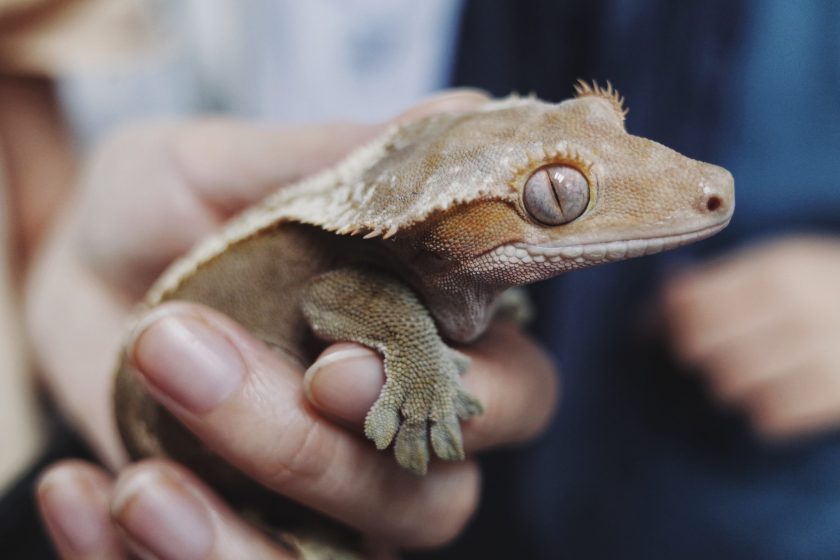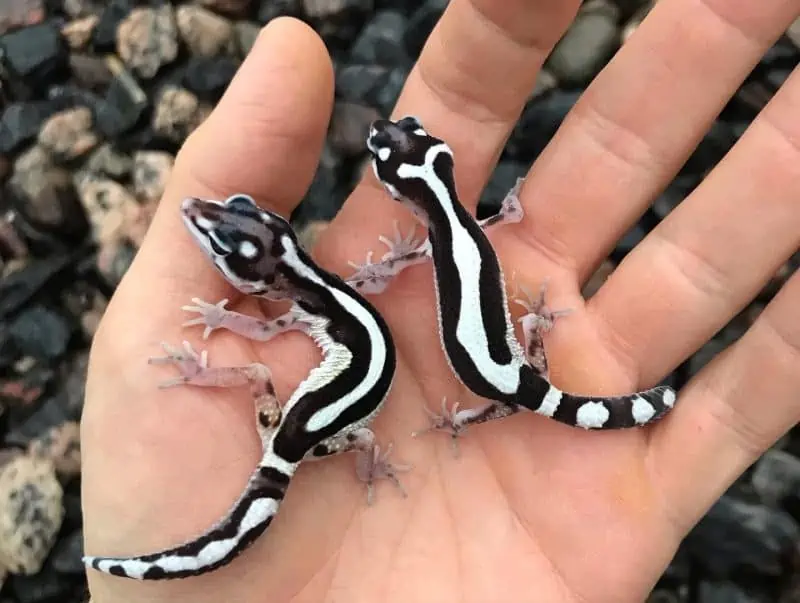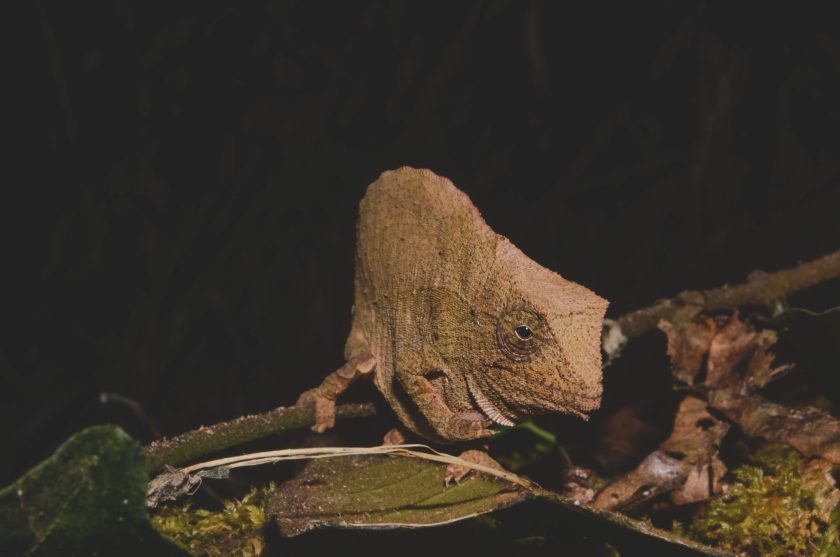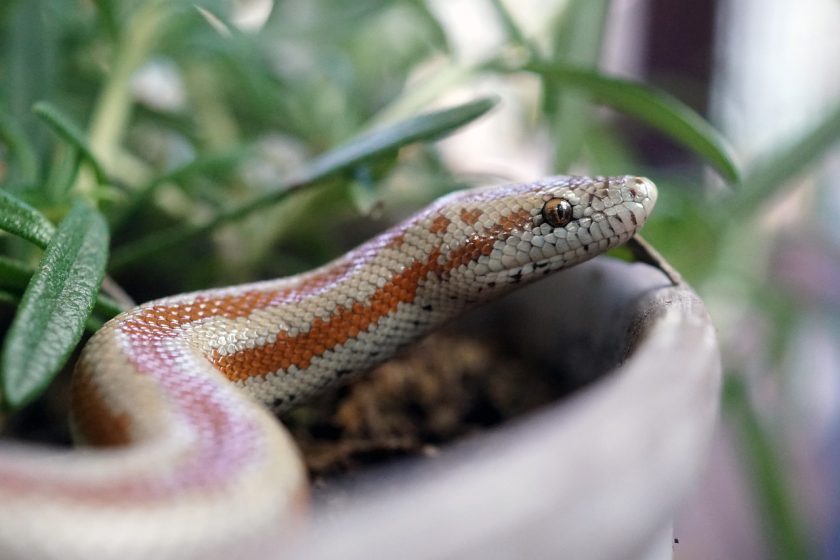In the world of our cold-blooded buddies, there’s something special about small reptiles. And it’s not just because they’re cute! These little creatures are great for beginners and experts alike. They bring the same wonder as their bigger relatives but in a size that fits right in your home. This magic is something else! Their small gestures? They’re amazing. These reptiles’ daily fun activities? You’ll love them. And taking care of them? It’s super easy. These little ones introduce us to a new way of bonding with pets.
I’ve always loved these small wonders of the reptile world. Here’s why they’re fantastic:
- Space-Saving
- Low Maintenance
- Allergy-Friendly
- Quiet Nature
- Easy to Handle
- Affordability
So, let’s jump in and learn all about seven small reptile pets. We’ll look at:
- What makes them unique
- How to care for them
- And why they might be the best little pets for you.
Top 7 Reptiles That Stay Small
Below, I’ve discussed the best pet reptiles that stay tiny their whole lives, perfect for enthusiasts with space considerations. But wait, there’s more. Maybe you’ll find the perfect first pet from this list!
1. Leopard Gecko
| Feature | Information |
| Scientific Name | Eublepharis macularius |
| Adult Size (inches) | 7 to 11 |
| Adult Weight (grams) | 50 to 80 |
| Lifespan | 10 to 20 years |
| Tank Size (gallons) | 10 to 20 |
| Best For | Beginners, Children |
Leopard Geckos, cute little creatures with sweet smiles, are famously known for their calm nature. They’re small, measuring only between 7 to 11 inches long. So, for those with limited room, these geckos fit right in.
But don’t let that tiny size fool you! They’re bursting with energy and curiosity. This playful nature makes everyone fall in love with them.
Now, looking after them isn’t hard either. Their daily routine, basically their lifestyle, is easy to follow. They eat live insects like crickets, mealworms, and waxworms – things you can get without fuss. But here’s the best part: they’re super calm.
They won’t get aggressive or try to bite. Handling them with their gentle behavior and small size is a walk in the park.
So, are you thinking of a pet reptile that’s safe and fun, especially for kids or beginners? Look no further than the Leopard Geckos.
2. Green Anole
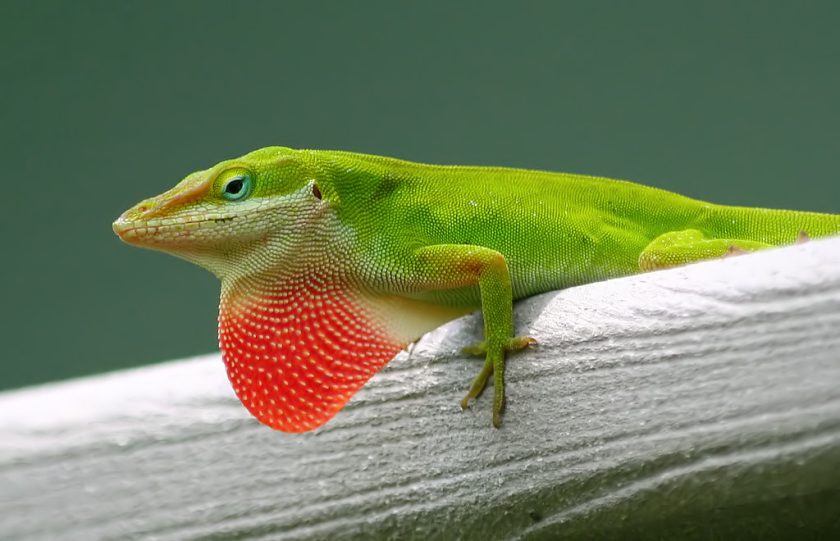
| Feature | Details |
| Scientific Name | Anolis carolinensis |
| Adult Size (inches) | Males: 8, Females: 5-6 |
| Adult Weight (grams) | 2 – 8 |
| Lifespan | 3 to 6 years |
| Tank Size | 10-gallon vertical tank |
| Best For | Children and Beginners |
Green Anoles are eye-catching due to their bright green color! This vibrant hue tells us they’re happy and active. Their size is also a highlight.
Males can grow up to 8 inches, and females stay around 5-6 inches. They’re a bit smaller. For those who don’t have a lot of space, these creatures are the perfect fit.
Now, let’s talk care. Taking care of Green Anoles is a breeze. Their diet is It’s pretty simple. They love eating insects. So, feeding them is not a big deal. And their behavior is pretty calm.
They love moving around but also enjoy having their own space sometimes. And if you’re worried about them being aggressive, don’t be. They don’t have a habit of biting a lot, a bonus if kids are around. Watching them climb can be fun. Their climbing skills make them entertaining pets.
With their fun antics and the fact they’re easy to care for, they’re a great choice. Beginners, especially, will find them a joy to have around.
3. Crested Gecko
| Feature | Details |
| Scientific Name | Correlophus ciliatus |
| Adult Size (inches) | 8 – 10 |
| Adult Weight (grams) | 42 – 45 |
| Lifespan | 10 – 15 years |
| Tank Size | A minimum of 20 gallons |
| Best For | Beginners and children |
Crested Geckos have distinctive crests running from their eyes to their tail. Their size varies between 5 to 10 inches, which makes them a handy pick for people who don’t have a lot of room.
Now, size aside, people love Crested Geckos for more reasons. Taking care of them is easy. They enjoy eating insects and sometimes fruit, too. So, feeding them isn’t a puzzle.
They’re calm, easy to handle reptiles, and perfect for newbies and expert reptile lovers. And even though they’re chill, they’re pretty active at night. This can be fun to watch. They’re also gentle and don’t bite a lot. This means they’re safe, even if kids are around.
How awesome is that?
4. Pygmy Chameleon
| Aspect | Details |
| Scientific Name | Rhampholeon |
| Adult Size (inches) | 3 – 4 |
| Adult Weight (grams) | 8.5 – 19.8 |
| Lifespan | 1 to 3 years |
| Tank Size | Minimum 5 gallon |
| Best For | Intermediate/advanced Reptile Enthusiasts |
Pygmy Chameleons are amazing tiny little reptiles with a cute look! These creatures are small, growing only about 3 to 4 inches, and that’s a big win for people who want pets but don’t have a lot of space. But size isn’t the only thing that makes them special. How you care for them, what they eat, and their calm behavior sets them apart.
Taking care of them? It’s not too tricky. They need a temperature gradient in their living space. And they like humid places. This means looking after them is pretty straightforward.
When it comes to food, they aren’t picky. Their diet is varied but not challenging to manage. Handling them is easy because of their gentle nature. But, keep in mind, they might be a little shy when you first get them – especially if they were taken from the wild.
During the day, you’ll see them move around quite a bit. But by evening, they mellow out. This daily routine, active during the day and calm at night, makes them even easier to handle. Are you worried about them biting? Don’t be. They’re not known for that, so they’re safe to be around.
5. Greek Tortoise
| Attribute | Information |
| Scientific Name | Testudo graeca |
| Adult Size (inches) | 5.9 to 7.1 |
| Adult Weight | 900 to 2300 grams (0.9 to 2.3 kg) |
| Lifespan | 50 to 125 years, potentially more |
| Tank Size | 3 feet by 6 feet with 18 inches tall walls |
| Best For | Experienced |
Greek Tortoises are something special. Their shells look like Greek mosaics – a beautiful sight! Compared to other tortoises that live long lives, these tortoises are smaller. And that makes them a good pick for those who love pets.
Now, here’s the thing: Greek Tortoises live a long time. They live even longer in captivity than in the wild. So, getting one means you’re in for a long commitment.
Their size is easy to manage, and so is their care. But, they have a preference. They don’t like being touched a lot. And if they’re upset? They might bite. So, they’re better for people who’ve had pets and know the ropes.
Setting things up for them takes some time at first. They need a good living space – a big wooden box is perfect. Inside, the temperature should vary in different parts. For food, they eat healthy stuff, mostly green leaves and vegetables. And they’re not too fussy about water. A simple, big, shallow dish does the trick. They drink from it, cool down in it, and even use it as a toilet.
During the day, they keep busy inside their space. They explore and munch on any good plants you put in – an excellent way to keep them happy.
6. Mud Turtle
| Attribute | Information |
| Scientific Name | Kinosternon |
| Adult Size (inches) | 2.75 to 6 inches |
| Adult Weight | 88 to 340 grams or more |
| Lifespan | Up to 50 years |
| Tank Size | 25 gallons |
| Best For | Beginners |
Mud Turtles stand out as small, water-loving buddies. You can spot them easily – thanks to their love for places that are sandy, wet, and, well, muddy. Their small size is a big win. People who love pets, especially those new to turtles, find this attractive.
Now, caring for them isn’t complicated. What do they eat? Mostly pellets. But sometimes, you’ll add fruits, vegetables, and dried insects to their menu.
One thing to note, though, is their feeding. It can get a bit messy. And because of this, you might need a separate place to feed them sometimes.
These turtles are a bit on the shy side. They’d rather not be picked up a lot. Families with young kids might want to think about that.
Most of the time, they search for food in water or walk around on land. They aren’t super active, but they’re calm. They don’t bite often. And this calmness, combined with their easy care, makes them a good pick for beginners.
7. Rosy Boa
| Aspect | Detail |
| Scientific Name | Lichanura trivirgata |
| Adult Size | 17 to 36 inches |
| Adult Weight | 300-600 grams |
| Lifespan | Up to 30 years |
| Tank Size | 20 to 30 gallons |
| Best For | Beginners, Children |
For those new to reptile keeping or younger enthusiasts, the Rosy Boa is an excellent choice. Because it’s gentle and doesn’t require a lot of care. What’s more, it comes in various colors and patterns. These traits are thanks to their wild ancestors, which adds to their attractiveness.
Their size is just right, especially if your space at home is limited. Most living setups can easily accommodate them. All they need is a small enclosure. And this means maintenance is a breeze, yet they still have a comfortable home. Their small size and calm nature also make them easy to handle, which is excellent for younger reptile handlers.
These snakes eat small rodents like mice, so feeding them is straightforward. And they have a moderate activity level – they’re not too energetic but not too lazy either. It’s just right, both for the owner and their living space. When they might feel threatened, a Rosy Boa is more likely to curl into a ball than bite. This reaction highlights their gentle nature once again.
What Is the Smallest Reptile To Keep as a Pet?
And now, you’re thinking: What is the tiniest among them all? The smallest reptile to keep as a pet among the options is the Mississippi Mud Turtle. This cute little turtle grows only about 2.75 to 4.75 inches. So, it’s perfect for small pet reptile lovers.
When you see this turtle, you’ll notice its protective shell. Like many turtles, this shell is a key feature – a kind of identity card for the species. Want a cool way to recognize them? Count the plates or scutes on their shell. But be warned, for many of us, lots of turtles can look pretty similar.
Caring for the Mississippi Mud Turtle is not complicated, making it great for those new to reptile pets. Clean homes and clear water are musts for them to avoid skin issues. When it comes to food, they’re not picky. They eat both plants and animals, like snails and water bugs. So, feeding them offers a variety of options.
These tiny turtles are known for being great companions. Plus, with a lifespan of 23 to 46 years, they’re in for the long haul with their owners.
Why Would You Want a Small Pet Reptile?
I almost hear you thinking: Why should I opt for a small reptile? Here’s why that’s important. A small pet reptile can offer many advantages over larger pets or reptiles. Here, I’ve enlisted some of the major benefits of small pets to make your life much easier.
Space-Saving
Small reptiles are great if you live in a small place, like an apartment. Their tanks are not big, so you can easily put them anywhere. And if you ever want to move or change things around in your room, it’s a breeze. You get the fun of having a pet without needing much space.
Easy Care Routine
Reptiles are pretty chill when it comes to care. You don’t have to groom them or take them for walks. They need food, water, and the right amount of warmth and humidity. Because they’re small, these little reptiles are even easier to look after than bigger ones.
Allergy-Friendly
Reptiles won’t make you sneeze because they don’t have fur or feathers. This feature sets them apart from furry pets and makes them a practical choice for a wider range of individuals.
Quiet Nature
Reptiles are quiet creatures, great if you like peace or live in a place where loud pets are a no-go. Their calm vibe can even help you feel more relaxed.
Easy to Handle
Their small size means they’re not scary so that kids can learn about animals and responsibility safely.
Pocket-Friendly, Too!
Having a small reptile won’t empty your wallet. They’re cheaper to buy and look after than bigger pets or other animals. Plus, there are many options, so you can find one that fits your budget.
Take Care!
The world of small reptiles is vast and fascinating. These little buddies can make your home lively and show you how to take care of unique pets. Even if they’re small, remember that each one is special and needs different things. Before you get one, it’s extremely important to learn about them. Look up info, chat with experts, and make sure you can give them a good home.
So, are you feeling excited about adding a little reptile buddy to your family? Did any of these cool little guys grab your attention? Let us know what you think in the comments!

